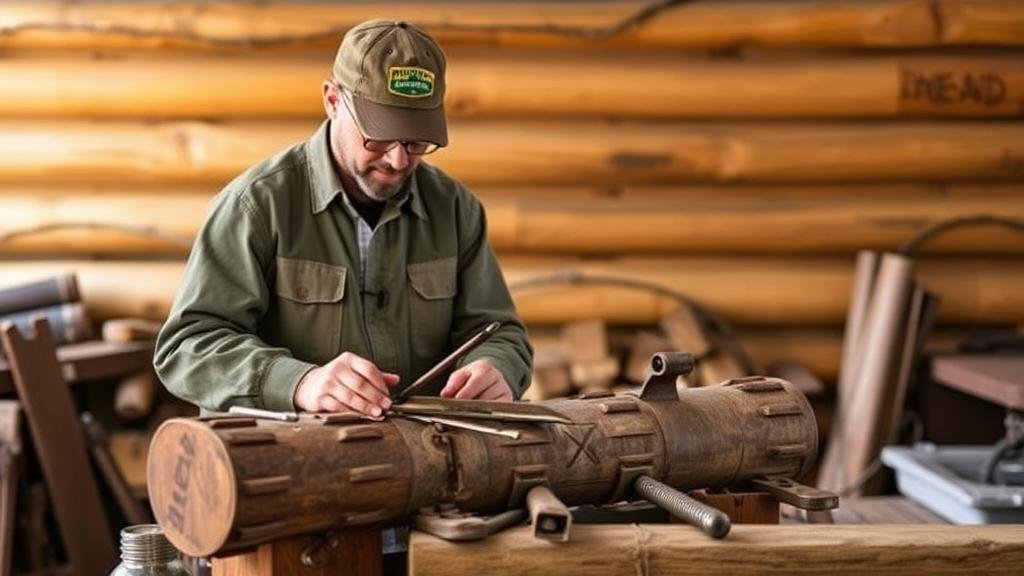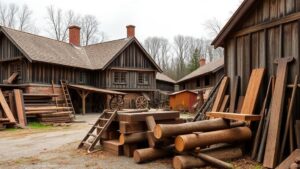Using Logging Camp Blueprints to Discover Lost Tools and Equipment
Using Logging Camp Blueprints to Discover Lost Tools and Equipment
The logging industry, which has existed for centuries, played a crucial role in the development of many regions, particularly in North America. As logging camps evolved, so too did the technology and tools used by loggers. Many of these tools and pieces of equipment have been lost to time, buried under layers of foliage, sediment, or even repurposed for other uses. This paper aims to explore the methods of utilizing historical logging camp blueprints to locate and recover these lost items, showcasing both the practical application of archaeology and the importance of preserving logging heritage.
The Evolution of Logging Camps
Logging camps were established in various regions, including the Pacific Northwest and the Appalachian Mountains, especially during the 19th and early 20th centuries. The camps typically consisted of a variety of structures, including bunkhouses for workers, equipment storage areas, and dining facilities. For example, in the late 1800s, the U.S. Forest Service documented over 258 logging camps across Northern California, each uniquely laid out according to the operational needs of the logging companies.
Understanding Logging Camp Blueprints
Blueprints serve as vital historical documents that outline the layout of logging camps, including the placement of equipment storage, workshops, and work areas. These blueprints often contain specific information about:
- The types of structures present
- The machinery used on-site
- Material flow and operational logistics
The analysis of these drawings not only facilitates the understanding of the industrial practices of the time but can also serve as a roadmap for locating lost tools and equipment. States such as Michigan and Washington maintain archives of these historic blueprints, providing invaluable resources for researchers and archaeologists alike.
Methods for Discovering Lost Tools
Utilizing logging camp blueprints, researchers can adopt several methods to locate lost tools and equipment at historic logging sites. e methods generally encompass both traditional archaeological practices and modern technology:
- Ground-Penetrating Radar (GPR): This non-invasive method allows archaeologists to detect subsurface anomalies that may indicate buried tools or structures.
- Geographic Information Systems (GIS): This technology can be employed to map and visualize logging camp layouts, overlaying blueprints with current topographical data to identify potential tool locations.
- Field Surveys: Walking through documented areas with historical blueprints in hand allows archaeologists to visually inspect potentially relevant sites.
A Case Study: The Lost Tools of the Nelson Logging Camp
One notable case study involves the Nelson Logging Camp established in Oregon during the early 1900s. Historical records suggest that a wide variety of tools, including saws, axes, and specialized felling tools, were lost over the decades. By analyzing blueprints from records archived at the Oregon State Library and conducting ground-penetrating radar surveys, a team of researchers successfully identified several key areas where tools were likely buried. r efforts led to the recovery of over 50 tools, many of which date back to the camps active years.
Challenges and Considerations
While the utilization of blueprints in discovering lost tools is promising, there are inherent challenges. These include:
- Accuracy of Records: Historical blueprints may lack precision due to changes made over time, altering the original layout.
- Environmental Factors: Natural erosion and human activity can obscure or completely bury significant discoveries.
- Legal Restrictions: Some sites may be protected by federal or state laws, complicating recovery efforts.
Conclusion
The exploration and recovery of lost tools and equipment from historical logging camps represent an intersection of archaeology, history, and technology. By employing logging camp blueprints, researchers can glean insights that not only enrich our understanding of historical logging practices but also facilitate the preservation of our industrial heritage. Important findings, such as those from the Nelson Logging Camp, underscore the potential for discovering valuable artifacts that illuminate the lives of loggers in the past.
Future research could benefit from collaboration between historians, archaeologists, and technology specialists to enhance the recovery techniques used in such projects, aiming to ensure the legacy of the logging industry is preserved for future generations.



